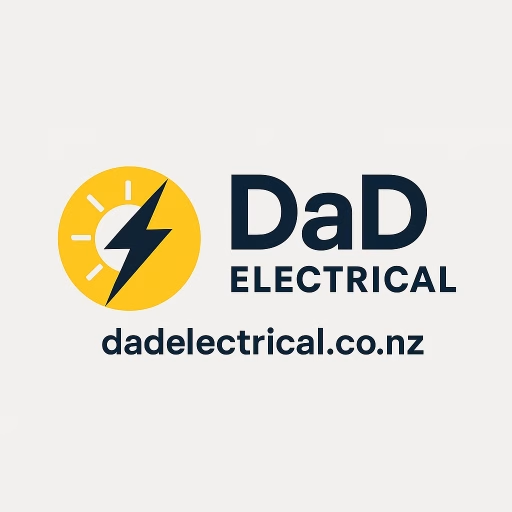The AS/NZS 4777 series of standards are crucial guidelines governing the installation, safety, and performance of grid-connected inverters in Australia and New Zealand. These standards ensure the seamless integration of distributed energy resources (DERs), particularly solar photovoltaic (PV) systems, into the electricity network. This post delves deeply into the details of AS/NZS 4777.1 and AS/NZS 4777.2, explaining their requirements, significance, and impact on the renewable energy industry.
What are AS/NZS 4777.1 and AS/NZS 4777.2?
- AS/NZS 4777.1:2020
This standard outlines installation requirements for grid-connected inverters. It specifies the processes and practices needed to ensure the safety, reliability, and proper functioning of inverters connected to electricity networks. - AS/NZS 4777.2:2020
This standard focuses on the performance requirements of inverters, including grid compatibility, safety features, and technical specifications such as voltage and frequency response.
Together, these standards address the entire lifecycle of a grid-connected inverter system, from installation to operation, ensuring they meet the demands of modern electricity grids.
Objectives of the AS/NZS 4777 Standards
The primary goals of these standards include:
- Safety: Protecting installers, consumers, and grid operators from electrical hazards.
- Grid Stability: Reducing potential disturbances caused by high DER penetration.
- Compatibility: Ensuring seamless integration with electricity networks in Australia and New Zealand.
- Renewable Energy Growth: Supporting the adoption of solar PV and other renewable technologies.
Detailed Breakdown of AS/NZS 4777.1
AS/NZS 4777.1 sets the rules for the safe and efficient installation of grid-connected inverters. Key provisions include:
1. System Design
- Installation designs must consider load balancing, voltage rise, and system efficiency.
- Inverters should be appropriately sized based on the solar array and battery capacity.
2. Installation Requirements
- Cabling and Connections: Installations must comply with AS/NZS 3000 (Wiring Rules), ensuring proper earthing, cable sizing, and secure connections.
- Isolation Devices: AC and DC isolation switches are mandatory for maintenance and emergency shutdown.
3. Location and Accessibility
- Inverters must be installed in a location that is safe, well-ventilated, and protected from environmental hazards like extreme heat or moisture.
- Systems must be accessible for inspections and servicing.
4. Emergency Shutdown and Labeling
- Rapid shutdown mechanisms are required for emergencies, ensuring that systems can be safely de-energized.
- Clear labeling must indicate system components, emergency procedures, and contact details for maintenance.
5. Compliance with Local Network Rules
- Installers must ensure the system complies with the network operator’s connection agreement.
Detailed Breakdown of AS/NZS 4777.2
AS/NZS 4777.2 specifies the performance requirements for inverters connected to the grid. This standard ensures that inverters operate safely, efficiently, and in harmony with the grid.
1. Power Quality
- Inverters must limit harmonic distortion, flicker, and voltage imbalances to maintain grid stability.
- Reactive power and power factor requirements ensure systems contribute positively to grid operations.
2. Voltage and Frequency Response
- Inverters must dynamically adjust their output based on grid conditions, such as changes in voltage or frequency.
- Overvoltage, undervoltage, overfrequency, and underfrequency protections are mandatory.
3. Anti-Islanding Protection
- Inverters must detect when the grid goes offline (islanding) and stop feeding power into the network to protect utility workers and equipment.
4. Cybersecurity
- Communication interfaces between inverters and external systems must use secure protocols to prevent unauthorized access.
5. Export Control
- Systems may include export limiting capabilities to prevent excess power from destabilizing the grid.
6. Compliance Testing
- All inverters must undergo rigorous testing to ensure compliance with AS/NZS 4777.2 standards.
Key Updates in the 2020 Revisions
The 2020 versions of AS/NZS 4777.1 and AS/NZS 4777.2 introduced significant changes:
- Dynamic Voltage and Frequency Response:
- Inverters must now respond to voltage and frequency changes in real time, helping stabilize grids with high DER penetration.
- Export Limits:
- Grid operators can impose limits on how much power can be exported back to the grid.
- Cybersecurity Measures:
- Enhanced protocols to protect inverters from cyberattacks.
- Testing Requirements:
- Updated testing methods ensure that inverters meet modern grid compatibility standards.
Why Compliance Matters
Non-compliance with AS/NZS 4777 standards can lead to:
- Rejection of grid connection applications.
- Safety hazards, such as electrical shocks and fires.
- Reduced system efficiency and reliability.
- Fines or penalties for installers and manufacturers.
For homeowners, ensuring compliance provides peace of mind and guarantees the system’s long-term performance.
How These Standards Impact the Renewable Energy Industry
- Installers:
- Installers must follow AS/NZS 4777.1 guidelines to ensure safe, compliant installations.
- Manufacturers:
- Manufacturers must certify their inverters under AS/NZS 4777.2 to sell them in Australia or New Zealand.
- Grid Operators:
- Operators benefit from standardized inverter behavior, making it easier to manage distributed energy resources.
- Consumers:
- Consumers enjoy safer, more reliable solar systems that contribute to lower energy bills and a sustainable energy future.
Future Trends and Considerations
The AS/NZS 4777 standards will likely evolve as DER adoption grows. Future updates may include:
- Integration of electric vehicle (EV) charging and vehicle-to-grid (V2G) systems.
- Enhanced energy storage interoperability requirements.
- Stricter cybersecurity measures to safeguard grid stability.
Conclusion
The AS/NZS 4777.1 and AS/NZS 4777.2 standards form the backbone of Australia and New Zealand’s renewable energy integration efforts. By setting clear guidelines for the installation and performance of grid-connected inverters, these standards ensure safety, reliability, and grid compatibility.
For homeowners, installers, and manufacturers alike, understanding and complying with these standards is not just a legal requirement but a critical step toward a more sustainable energy future.
If you have further questions or need assistance with inverter installation and compliance, consult a certified professional or refer to the official standards documentation.

I like this site because so much utile stuff on here : D.